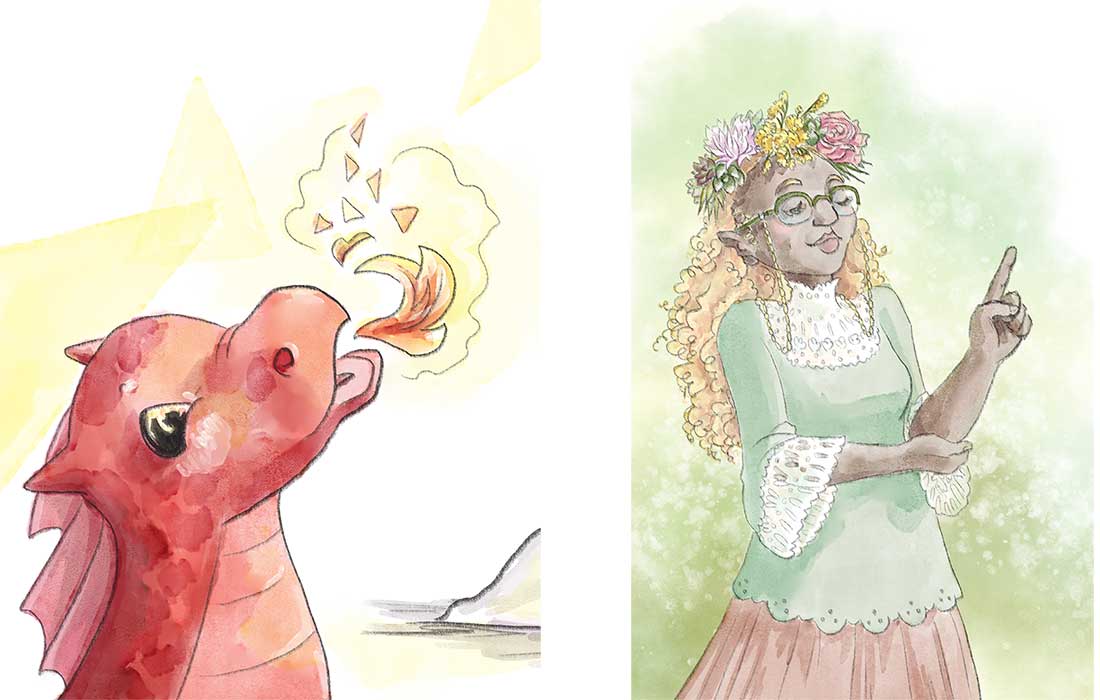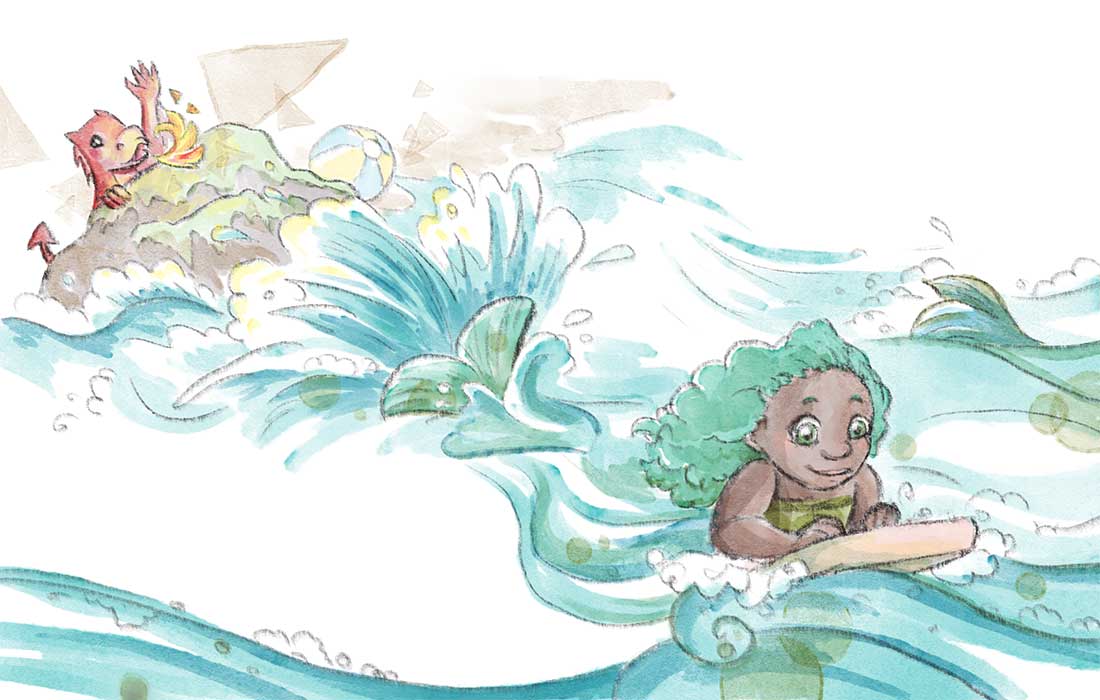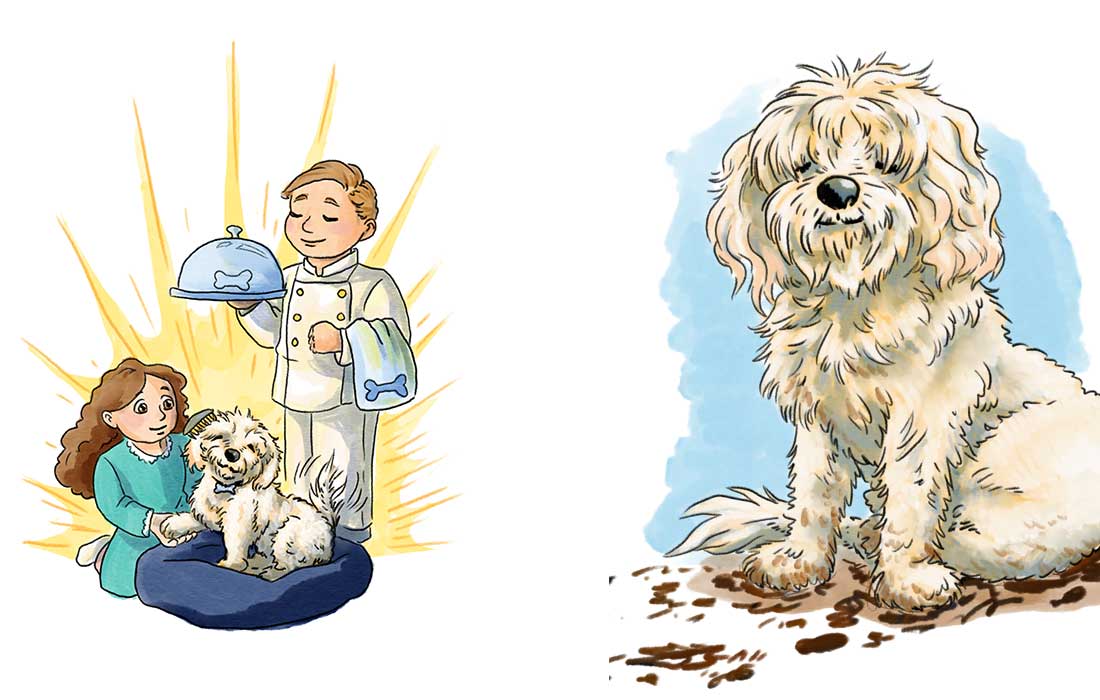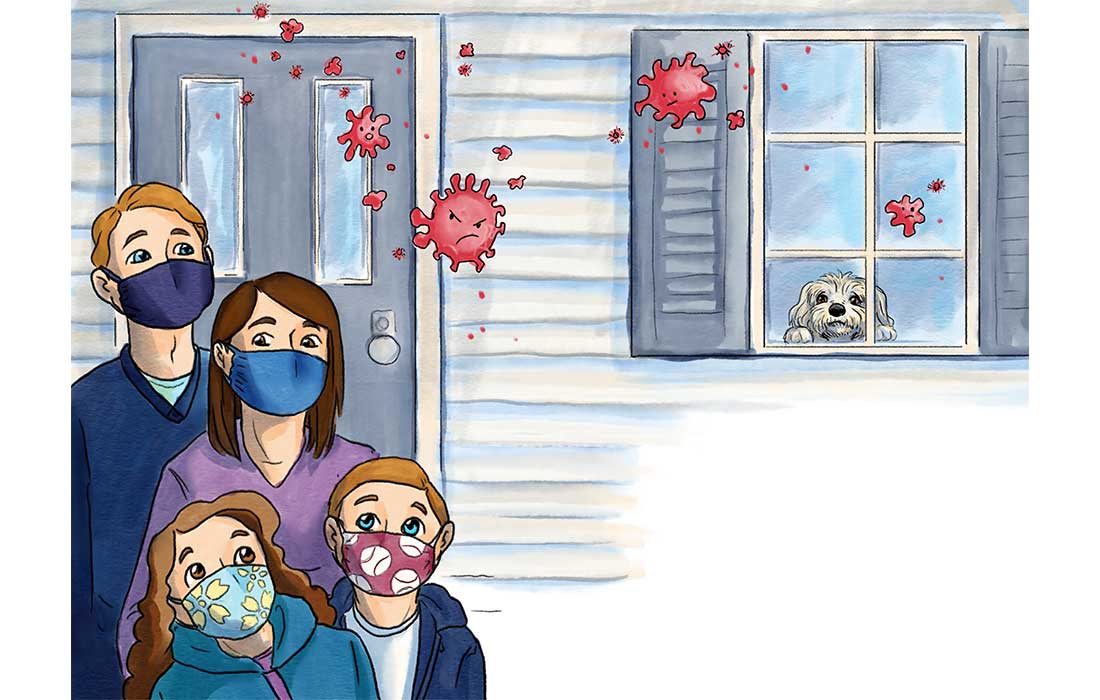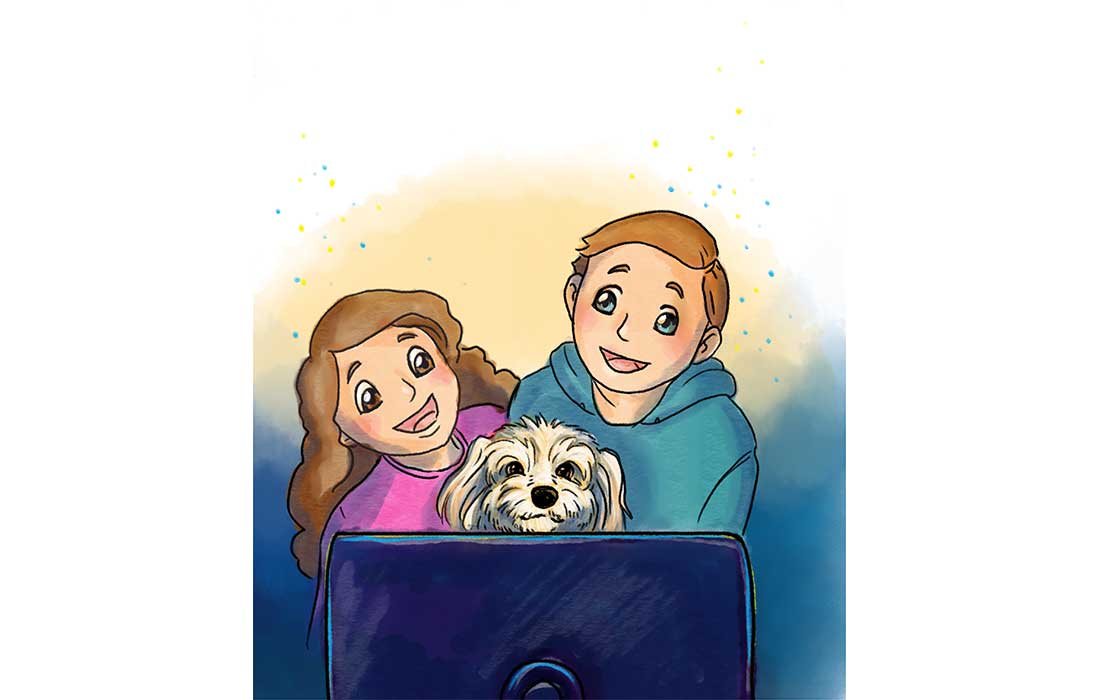29 Apr One Year, One Pandemic, Three Children’s Books: Time Flies
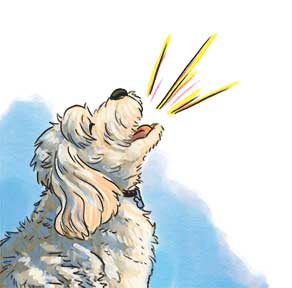
The year-long pandemic has compelled us to change our lives – practicing social distancing, dealing with a drop in business, investing in rethinking our businesses, and redefining the work we do to meet online demands. Some of us have taken the opportunity of a quieter schedule to tackle professional goals. Aspiring illustrator Liz DiFiore is a great example of this: in the past year, she took on not one but two children’s book projects, and she’s working on her third. What makes this accomplishment particularly impressive is that these were her first-ever children’s books.
Although DiFiore was new to children’s book publishing, she had a solid grasp of how to pursue illustration projects. She is very active in networking groups, the Society of Children’s Book Writers and Illustrators (SCBWI), and the Graphic Artists Guild. That has given her an arsenal of best practices to follow in negotiating with clients, structuring the client-illustrator relationship, and following through on delivery.
What is notable about these three illustration projects is that each resulted from outreach DiFiore did – to aspiring authors active with SCBWI, through her business networking group, and on the Reedsy invitation-only website for publishing professionals. DiFiore also uses skills she developed in her previous job as a social media manager to be sure she has a robust following on social media, engaging with the illustrator community, and showcasing projects she’s working on. This demonstrates DiFiore’s competence in the skills many professional illustrators find the hardest to master: networking and marketing.
Speaking with Prospective Clients
Children’s book publishing is fraught with pitfalls for authors new to self-publishing. When speaking with potential clients, DiFiore has developed a list of questions to gauge the author’s intention and preparedness:
- Do they know the ins and outs of self-publishing? Have they researched the costs?
- Has the book been professionally edited? DiFiore cautions that revisions made to the text after illustrating has commenced can result in expensive redraws.
- What is their budget? DiFiore has found that many authors are not aware that illustration is the most expensive investment in a children’s book project. She uses the Guild’s Handbook: Pricing & Ethical Guidelines for guidance and asks for a limited license to bring down costs for self-published authors.
Book 1: A Fantasy Project
Enchanted Island Preschool
- 32 pages self-published on Amazon
- Preschool reading level
- Established author, first children’s book project
- Artwork: front and back covers, 14 spreads, flyleaves
DiFiore’s first project was something of a dream job since it involved developing rich, playful, fantastic characters such as mermaids and dragons. The Enchanted Island Preschool is the first children’s book by writer Maureen Lynah. Lynah had a vision for a book about an enchanted preschool, where a little dragon and his mermaid, unicorn, and fairy friends learn to work together. Lynah had thoroughly developed the manuscript but was searching for an illustrator to help realize her project. She had met DiFiore through an SCBWI meeting and, five months later, dug out her business card.
Although this was the first children’s book project for both – and perhaps because of this – the collaboration between author and illustrator went very well. DiFiore found that the manuscript was well-developed, and she was charmed and excited by the characters. Lynah was open to a fresh perspective DiFiore brought as a visual artist. For example, one of the first changes DiFiore proposed was to move the fantasy preschool from a brick building to a grotto over a cove.
The deadline for the book was extremely tight: 4 ½ months for a 32-page book requiring front and back cover illustrations, flyleaves, and 14 full-color spreads. Fortunately, the manuscript was tightly developed, and few revisions were required. Throughout the process, DiFiore chronicled her progress by streaming her work on Twitch (after getting permission from the author). That permitted her to solicit critiques from her artist peers and build excitement for the book’s pre-publication. The book was published on Amazon in August of 2020, with good sales and high ratings.
Book #1: What DiFiore Learned…
- When on a really tight deadline, project management is critical.
- Composition and color, and to have confidence in her style.
- The artwork might look very different at the beginning of a book project than at the end.
- How to draw horses!
Self Publishing and Fee Structure
Like many self-published authors, Lynah used Amazon KDP, printing the book on-demand as a saddle-stitched paperback. As negotiated in their initial agreement, DiFiore was paid on a flat fee structure as milestones were reached throughout the project (typically 30% on signing, 25% upon sketch approval, 25% on color approval, and 20% upon final delivery). However, DiFiore doesn’t charge a royalty on self-published author projects, recognizing that the tenuousness of the on-demand market and the royalty fees charged through the Amazon KDP program cut into the author’s book income.
Book 2: A Labor of Love and Caring
Mookie and Rona
- 52 pages self-published on Amazon
- Early Reader reading level
- New author vanity project
- Artwork: front and back covers, 21 pages of illustration (half pages, spots and full spreads)
DiFiore’s second project hit home on many levels, particularly for an illustrator working on her first book projects during a pandemic. Mookie and Rona was conceived as a promise by retired psychologist Ruth Fritz to her grandchildren. As the Coronavirus crisis increasingly constricted the children’s lives – school closures, canceled playdates, postponed activities, solitary birthdays – the children would confide in their grandmother their distress. In seeking to help them process the scary changes to their world, she would ask them, “What does Mookie think about this?” For Mookie, the family dog, the pandemic meant increased cuddles, lots of playtime with a family that is home all the time, and the novelty of getting bathed in the kitchen sink rather than going to the pet groomer. Asking the children to reframe what they were going through was Fritz’s way of helping her grandchildren cope with the changes that the pandemic was forcing onto the family.
As Fritz collected her grandchildren’s text messages on what Mookie was thinking, she promised them that she would put them together into a book. To meet that promise, she reached out to a local art college, Montserrat. It just so happened that her contact at Montserrat is also a member of one of DiFiore’s networking groups. For Fritz, the connection was perfect. Fritz did not know how even to begin to publish a book, whereas DiFiore had thoroughly researched the ins and outs of children’s book development and self-publishing.
As a longer book with an older readership, the book didn’t require many full-page spreads. However, working with an author remotely on a project depicting actual people posed its own challenges. DiFiore had to learn to work from photographs of the children and dog for reference. That revealed how complicated communications on visual projects could become. DiFiore also needed to learn how to request the photos which conveyed the body parts, gestures, and positions she required.
She also had to change her entire color palette, working with hues that are far brighter and more saturated than she is used to working with. Since she wasn’t able to work with an art director, she relied heavily on her peer critique for feedback and guidance. She also did several color studies before starting the project, working through issues with light and tone before investing time into the actual illustrations.
Despite these challenges, the project was a fun one to work on. Fritz had promised her family the cover art in time for Christmas. DiFiore delivered a charming portrait of Mookie in time for the holiday. The remaining interior illustrations were developed from December through March. As the book came into being, Fritz realized that what she had thought would be a gift for a small family group had a much wider audience. The book was self-published on Amazon, where it has sold internationally and is well-reviewed. While there are several children’s books addressing the pandemic, Mookie and Rona was unusual in that it broached the mental stress that the crisis imposed on children. Fritz took the book a step further, developing a Mookie and Rona website with questions parents can use to direct a conversation with their children on their fears about the pandemic.
Book #2: What DiFiore Learned…
- How to use a bright, saturated color palette.
- How to work from picture references versus live models.
- How to communicate different visual ideas and manage expectations.
- More about project management!
Book 3: Coming Soon…
Currently, DiFiore is working on a third book project, slated to come out in mid-June. This one came her way through the website Reedsy. Similar to Upwork, Reedsy is a by-invitation platform for professionals in the publishing industry. It can be a good source for publishers to find illustrators, and, as DiFiore’s experience shows, vice-versa. Since she had just completed her first two book projects, the timing was perfect.
While details on the book won’t be forthcoming until after it’s published, DiFiore has shared that this book is in a different direction than her previous two. She describes it as Aesop-fablesque: a playful tale about a greedy mouse who takes his boldness a bit too far.
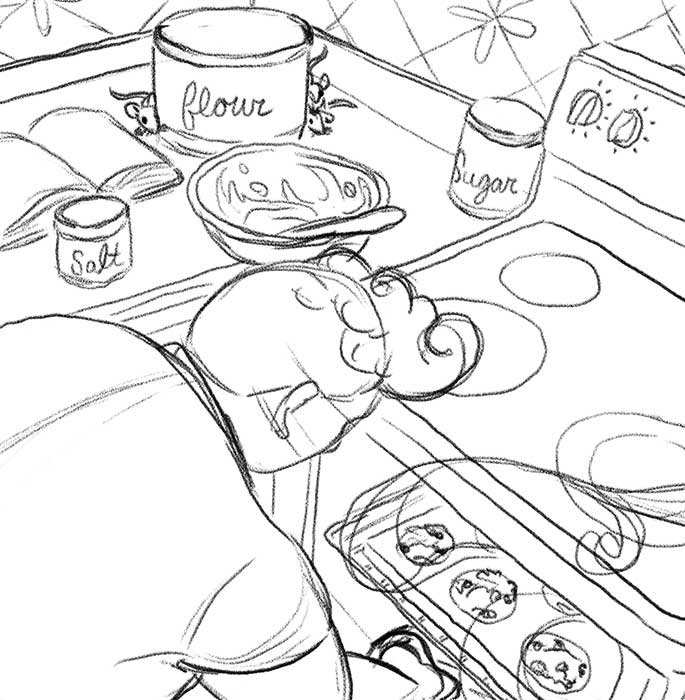
Advice for Aspiring Illustrators
DiFiore’s experience has taught her that there are nuances to marketing oneself to self-publishing authors versus traditional children’s book publishers. Although she personally does not use an artist agent, agents can be beneficial, particularly for artists who shy away from self-promotion. Illustrators have two paths to children’s books: strictly an illustrator-only or an author/illustrator. For artists with a gift for writing, the latter option means they can also approach literary agents for representation. The benefit of being an author/illustrator is also financial; since then, the artist can command higher royalties.
DiFiore cautioned against teaming up with an author to present a fleshed-out book idea with both text and illustration to a publisher. Publishing houses tend to prefer to match their choice of illustrator to a children’s book project. Often books that arrive with an illustrator attached are not considered. So while teaming up with an illustrator for a self-published children’s book project works, it may hurt the project if the author is seeking a traditional publisher.
Although art directors at traditional publishing houses are inundated with marketing materials from illustrators, DiFiore advises illustrators to continue to send out their emails with samples of their work and links to their portfolios. (In the age of COVID, she’s seen an enormous drop-off in postcard mailings.) While an illustrator might not hear back for even years, art directors do tack work they like on their vision boards, and an illustrator might get an unexpected call back.
DiFiore also recommends signing up for portfolio critiques and industry events. Both will give the illustrator valuable insight into the publishing industry, and they may get the notice of any participating art directors.
Liz DiFiore is a freelance illustrator with a passion for children’s stories. Her favorite projects create empathetic characters, encourage relationships, and inspire kids to imagine the “what ifs.” She is also the Graphic Artists Guild’s New England Regional Representative. View her work on her website, Lizzie By Design.
Images © Liz DiFiore. Used with permission.


